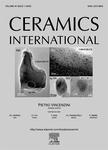版权所有:内蒙古大学图书馆 技术提供:维普资讯• 智图
内蒙古自治区呼和浩特市赛罕区大学西街235号 邮编: 010021

作者机构:Dalian Univ Technol R&D Inst Fluid & Powder Engn Dalian 116024 Peoples R China
出 版 物:《CERAMICS INTERNATIONAL》 (国际陶瓷)
年 卷 期:2024年第50卷第14期
页 面:24995-25004页
核心收录:
学科分类:08[工学] 0805[工学-材料科学与工程(可授工学、理学学位)] 080502[工学-材料学]
主 题:Lithium-ion batteries Carbon coating Nanoparticles Solvothermal method High-voltage
摘 要:The emerging market of high-power lithium -ion batteries (LIBs) highlights the importance of developing highvoltage cathodes. Lithium nickel phosphate (LiNiPO 4 ) with the highest theoretical discharge potential (-5.1V) has attracted increasing attention due to its stable olivine structure. In this study, ultrathin carbon layercoated LiNiPO 4 was synthesized using oleylamine-assisted solvothermal method under different solvothermal times, and the effect of solvothermal time (1h - 18h) on LiNiPO 4 samples is fully investigated. X-ray diffraction (XRD) shows that high-purity LiNiPO 4 materials can be prepared after calcination of the solvothermal product under N 2 , but adding part of H 2 to the calcination atmosphere will lead to the generation of impurities in the target product. As the solvothermal time increases, the product will agglomerate and grow, the particle size will increase, and the morphology will change from nanoparticle to rodlike structure. After the high-temperature calcination step, the oleylamine is completely carbonized, and a conductive carbon layer is successfully coated on the LiNiPO 4 with the thickness of 2 nm. As the solvothermal time increases, the graphitization degree of oleylamine increases after carbonization. The existence of the carbon layer and the increase in the degree of graphitization are beneficial to improving the electrical conductivity and Li -ion diffusion rate of LiNiPO 4 . The initial discharge capacity of LNP@C-12h product prepared with 12 h solvothermal time is 35 mA h g -1 at 0.1 C. Rietveld analysis shows that the anti-site defect concentration of the LNP@C material is 1.07 %, and the proportion increases to 2.83 % after several cycles. This work provides a positive contribution to the synthesis and modification of high-voltage LiNiPO 4 materials and explains the electrochemical performance degradation of LiNiPO 4 from the perspective of increasing the concentration of anti-site defects.